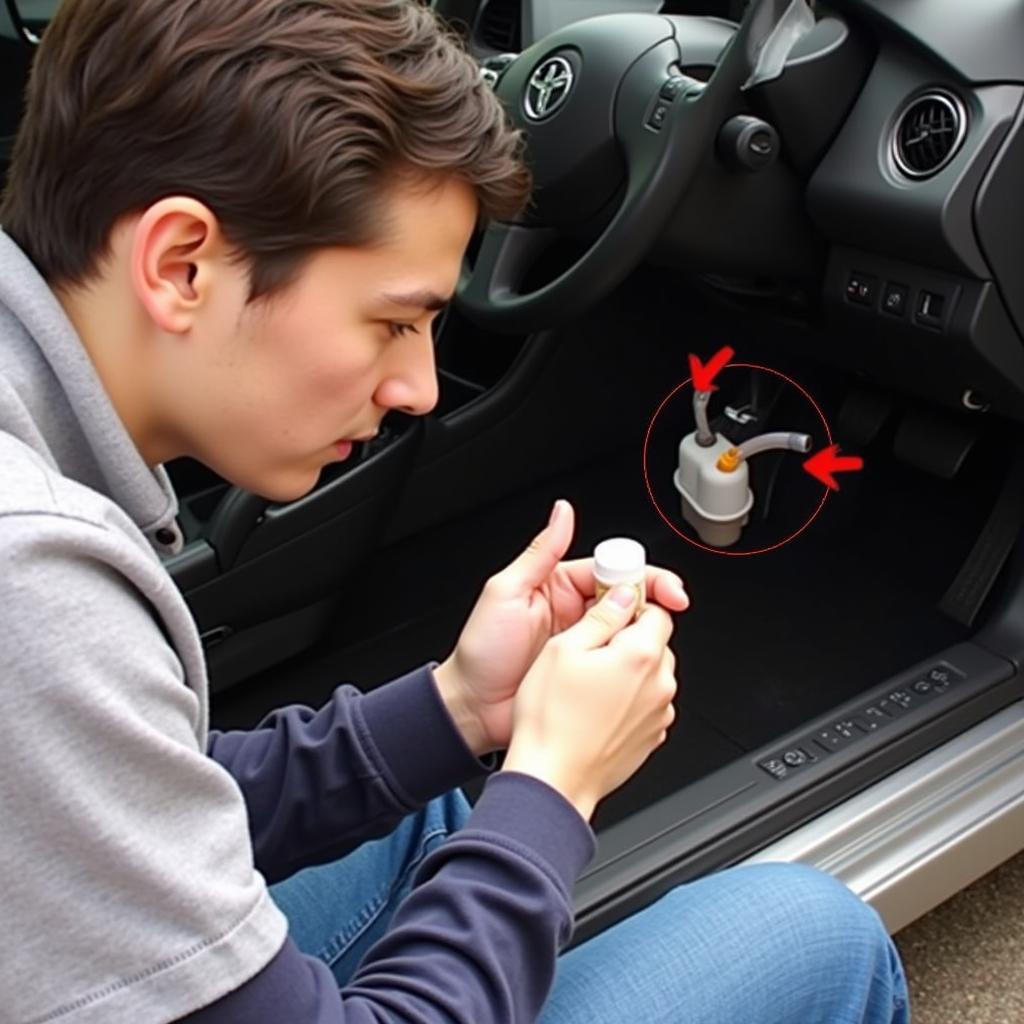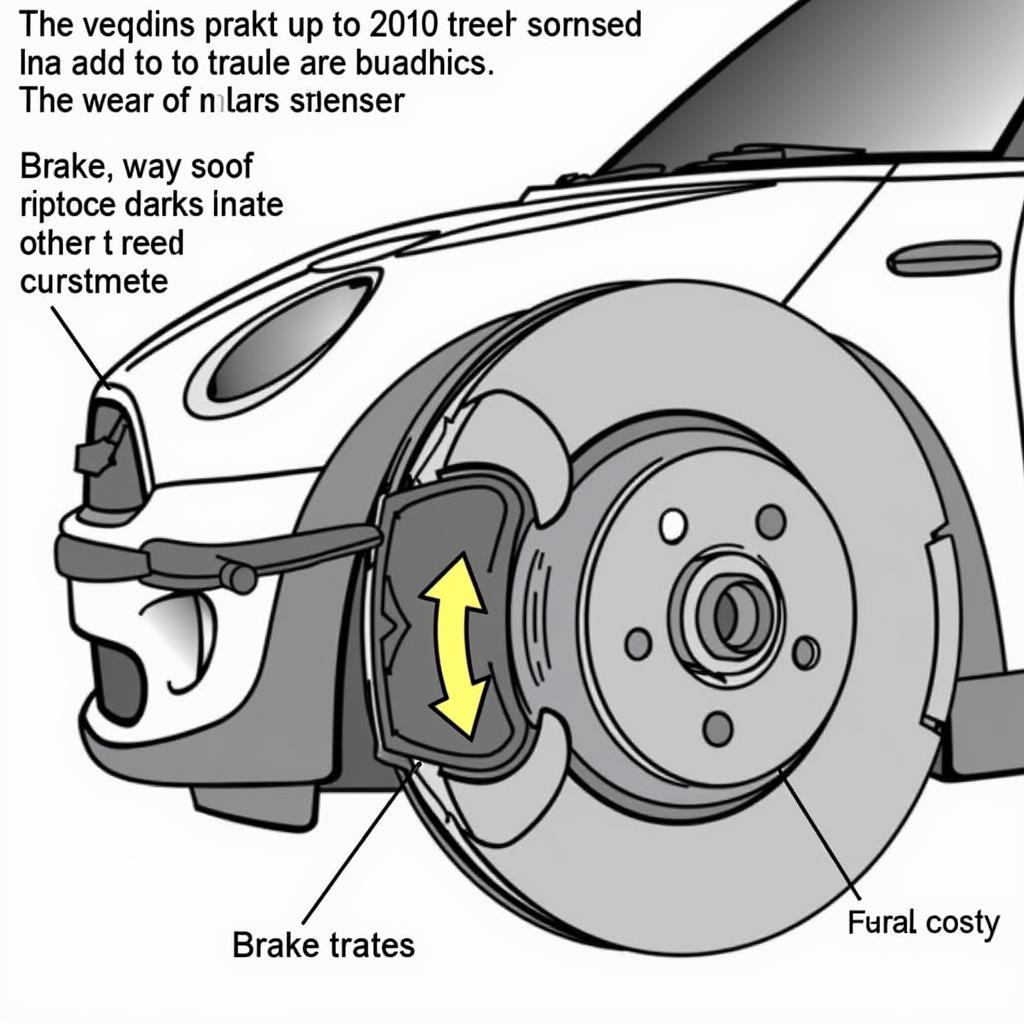The brake warning light on your dashboard is a crucial safety feature designed to alert you of potential problems within your braking system. Ignoring this warning light could lead to decreased braking performance and increase the risk of an accident. This comprehensive guide delves into the intricacies of the brake warning light system, empowering you to address this issue effectively.
What Does the Brake Warning Light Mean?
When your brake warning light illuminates, it signals that one or more components within your braking system may require attention. This illumination could indicate various issues, ranging in severity from a simple parking brake engagement to more critical problems like low brake fluid or a malfunction within the anti-lock braking system (ABS).
Common Causes of Brake Warning Light Illumination
Let’s explore some frequent culprits behind a glowing brake warning light:
- Engaged Parking Brake: Often overlooked, the simplest explanation might be that you haven’t fully disengaged your parking brake.
- Low Brake Fluid: Brake fluid is the lifeblood of your braking system, transmitting the force from your foot to the brake pads. A leak in this system can trigger the warning light.
- Worn Brake Pads: Brake pads are designed to wear down over time. When they reach a certain thickness, the brake warning light will illuminate, indicating the need for replacement.
- Faulty Brake Light Switch: This switch activates your brake lights when you press the pedal. A malfunctioning switch can disrupt the brake light circuit, triggering the warning light.
- ABS Problems: Modern vehicles are equipped with ABS, which prevents wheel locking during hard braking. Issues within the ABS system, such as a faulty sensor, can activate the warning light.
Diagnosing Your Brake Warning Light
Determining the specific cause behind your brake warning light often requires a systematic approach:
- Check Your Parking Brake: Begin with the obvious – ensure your parking brake is fully released.
- Inspect Brake Fluid Level: Locate the brake fluid reservoir under the hood and check the fluid level. If it’s low, there might be a leak.
- Examine Brake Pads: Visually inspect your brake pads through the wheel spokes. If they appear excessively thin, they likely need replacement.
- Consult a Professional: For anything beyond these basic checks, it’s best to consult a qualified mechanic, especially if you suspect issues with the brake light switch or ABS system.
What Does a Brake System Warning Light Mean?
Understanding the different ways your brake warning light communicates is crucial:
- Solid Light: Typically indicates low brake fluid or worn brake pads.
- Flashing Light: Often suggests a problem with the ABS system.
The Importance of Timely Action
“Ignoring a brake warning light is like dismissing a fire alarm – potentially disastrous,” cautions automotive engineer, David Miller. “Timely attention can prevent minor issues from escalating into costly repairs or, worse, accidents.”
Common Causes of Toyota Brake System Warning Light
Can You Drive with the Brake Warning Light On?
While it might be tempting to continue driving with an illuminated brake warning light, it’s strongly discouraged. Driving with compromised brakes significantly increases the risk of accidents. If you must drive a short distance to a repair shop, exercise extreme caution, maintain a safe distance from other vehicles, and drive at lower speeds.
Resetting Your Brake Warning Light
Once you’ve addressed the underlying issue, the brake warning light should extinguish. In some cases, a manual reset might be necessary, which often involves using a diagnostic scanner.
Reset Brake System Warning Light
2011 Toyota Sienna Brake System Warning Light
Maintaining Your Brake System
Prevention is always better than cure. Here are some preventive measures to maintain a healthy brake system:
- Regular Inspections: Adhere to your vehicle manufacturer’s recommended maintenance schedule for brake inspections.
- Timely Fluid Changes: Brake fluid degrades over time. Get it flushed and replaced as recommended by your car manufacturer.
- Quality Brake Pads: Invest in high-quality brake pads for optimal performance and longevity.
Brake System Warning Light Toyota Corolla
Conclusion
Your brake warning light system is your first line of defense against potential braking issues. Understanding its signals and taking prompt action can save you from costly repairs and ensure your safety on the road. Remember, when it comes to brakes, early detection and proactive maintenance are paramount.


